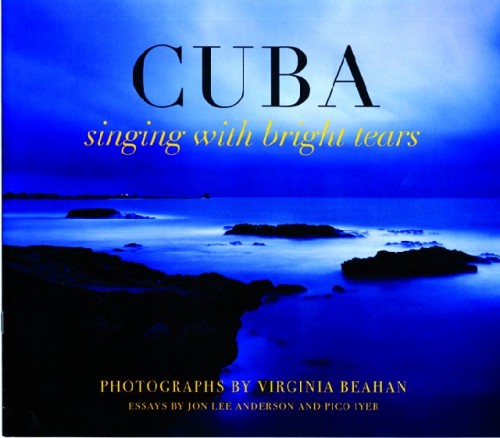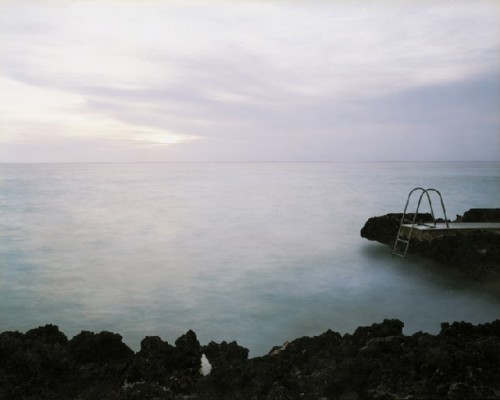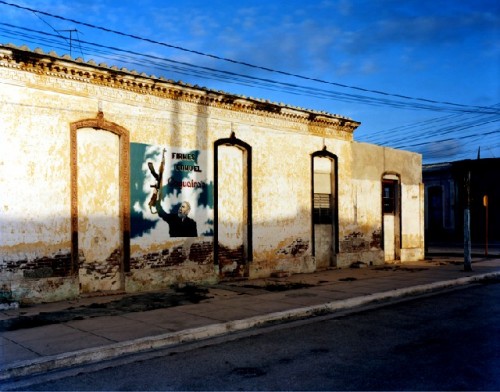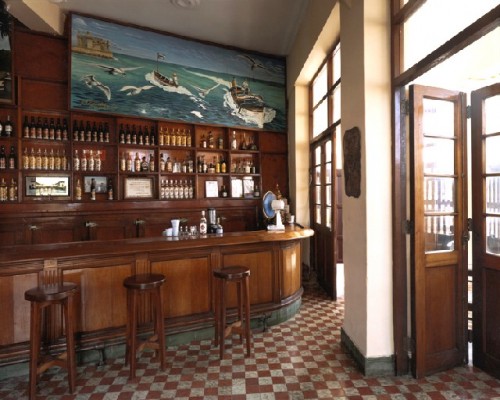Cuba: Singing with Bright Tears
Photographs by Virginia Beahan
By: Charles Giuliano - Feb 18, 2009
Cuba: Singing with Bright Tears
Photographs by Virginia Beahan
Essays by Jon Lee Anderson and Pico Iyer
162 pages, illustrated
Pond Press, 2009
128 Java Street, Brooklyn, NY 11222
http://www.pondpress.com
ISBN: 978-0-9761955-5-9
With a population of 11 million the 42, 803 square mile island of Cuba is just 90 miles from the coast of South Florida. Many have perished trying to reach the United States in makeshift crafts from rafts to inner tubes or the vessels of smugglers. They are refugees from the Socialist regime of Fidel Castro (now governed by his younger brother Raul) who seized power in a revolution that ousted President Fulgencio Batista in 1959.
Under the corrupt regime of Batista the nation was rich from crops of sugar cane and tobacco. It was also a destination for tourism that thrived on gambling and a notoriously decadent night life. That ended with Castro and his Marxist government which initially was supported by the former Soviet Union. This came to a head in the face-off in the early 1960s between President Kennedy and the Soviets in the Cuban Missile Crisis, an embargo that continues today, and the unsuccessful Bay of Pigs invasion.
As a result of the embargo Cuba is a time capsule. Most of the cars and machinery date from the early 1960s. Because of a lack of parts they are kept running inventively through recycled materials. The economy has stagnated particularly after the dismantling of the former U.S.S.R. ended financial support. Today with a GNP of $55 billion the average annual income is just $4,650. As a socialist government, however, there is a strong educational and health care system. The Castro government has enjoyed success in its social programming as well as endured dismal failures.
In this mix the arts have flourished sustaining rich and diverse traditions of music and the visual arts. As well as producing baseball stars who have managed to defect to the Major Leagues.
While it is not legal for American citizens to travel to Cuba many have managed and for a time artistic exchanges were allowed. The Bush administration cracked down with threats against those who defy bans on travel and trade. It is hoped that the Obama Presidency will bring long anticipated changes. There has also been speculation, as articulated in an essay in this book by Jon Lee Anderson, of what will occur when the now ill and retired President Fidel Castro passes away. There is continuity of the Marxist regime represented by passing power to Raul Castro but since he is in his mid 70s this is not seen as a long term administration. While it is doubtful that Cuba will return to democracy any time soon it is expected there will be a more stable travel and trade agreement with the United States.
The sumptuous book of photographs by Virginia Beahan provides a richly compelling view of one artist's vision of the tropical island. It mostly serves as a still life and landscape study. There are very few images involving people. The story of Cuba is conveyed through views of the urban and rural landscape. Here and there are signs and fragments of agit-prop texts and slogans. There are photographs of the tarnished glory of the former colonialism when Cuba was known for its decadence. There are glimpses of this prior splendor now abandoned and decrepit.
The artist calls our attention to crude propaganda images such as a sign dedicated to "Martyr of the Revolution, Pinar del Rio." There are similar images of Che and Fidel. In addition to their power as signifiers of revolution Beahan also composes her photographs with the eye of a formalist favoring simple and reductive compositions. The point of view is more artistic than journalistic. She conveys no agenda of telling us a complete and compelling story. Her eye simply records rather than editorializes. This objective approach allows us to draw our own conclusions regarding the culture and its political agenda.
This may also be a weakness of the book particularly in the absence of human elements. The approach is so abstracted and aesthetic that it creates a conundrum for the reader. The book does not represent Cuba, per se, but rather an album of carefully selected images by a sophisticated and refined artist.
Beahan's one page artist statement is too brief to get a handle on her intention or even how she came to Cuba and what she experienced. The essays by Pico Iyer and Jon Lee Anderson also seem to function independently from the specific images. The essay by Iyer is brief and poetic while that of Anderson summarizes and updates us on the political situation. It is disappointing not to find more discussion and insights about Beahan's working technique, agenda, and augmentation in text of the specific images. The captions are brief and descriptive but the album evokes much more that might be said about the work.
While Beahan has produced a compelling collection of stunning images the larger topic of Cuba itself remains an enigma. Let us hope that the Obama administration will soon provide us with opportunities to travel and see Cuba first hand. When and if that happens surely the images that Beahan has captured will disappear rapidly.







